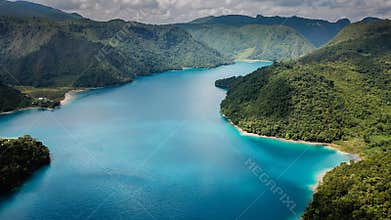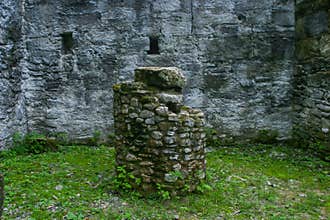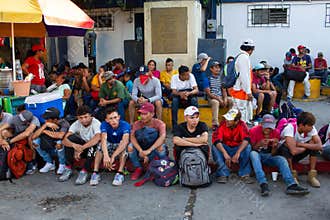Wildlife: Neotropic Cormorant Is Used For Fishing By The Uru Tribe. A Neotropic Cormorant Is Seen In Lake Izabal, In Guatemala. The Neotropic Cormorant Or Olivaceous Cormorant Phalacrocorax Brasilianus Is A Medium-Sized Cormorant Found Throughout The American Tropics And Subtropics, From The Middle Rio Grande And The Gulf And Californian Coasts Of The United States South Through Mexico And Central America To Southern South America, Where He Is Called By The Indian Name Of `Biguã¡`. It Also Breeds On The Bahamas, Cuba And Trinidad. It Can Be Found Both At Coasts Including Some Mangrove Areas And On Inland Waters. In Peru The Neotropic Cormorant Is Used By The Uru People For Fishing. Its Diet Consists Mainly Of Small Fish, But Will Also Eat Tadpoles, Frogs, And Aquatic Insects. Neotropic Cormorants Are Monogamous And Breed In Colonies. The Nest Is A Platform Of Sticks With A Depression In The Center Circled With Twigs And Grass. It Is Built A Few Meters Above The Ground Or Water In Bushes Or Trees. Up To Five Chalky, Bluish-White Eggs Are Laid. Most Pairs Lay Three Eggs, But The Mean Number Hatched Is Less Than Two. The Eggs Soon Become Nest-Stained. Both Sexes Incubate For About 25€“30 Days, And Both Parents Feed The Young Until Around The 11Th Week. By Week 12, They Are Independent. One Brood Is Raised Per Year. Unlike Other Cormorants, This Bird Can Often Be Seen Perching On Wires. This Bird Is Largely A Permanent Resident, With Some Birds Occasionally Wandering North In The Warmer Months.
ID 860367707915 © Cduartefoto | Megapixl.com
Sharing is not just caring, it's also about giving credit - add this image to your page and give credit to the talented photographer who captured it.:
KEYWORDS
america american aquatic areas bahamas bigua bird central cormorant cuba diet eggs female fish fishing frogs indian inland insects izabal lake male mangrove medium mexico monogamous name neotropic nest north olivaceous permanent peru resident size small south states tadpoles trees tribe trinidad tropics united uru used wander water wildlife



































